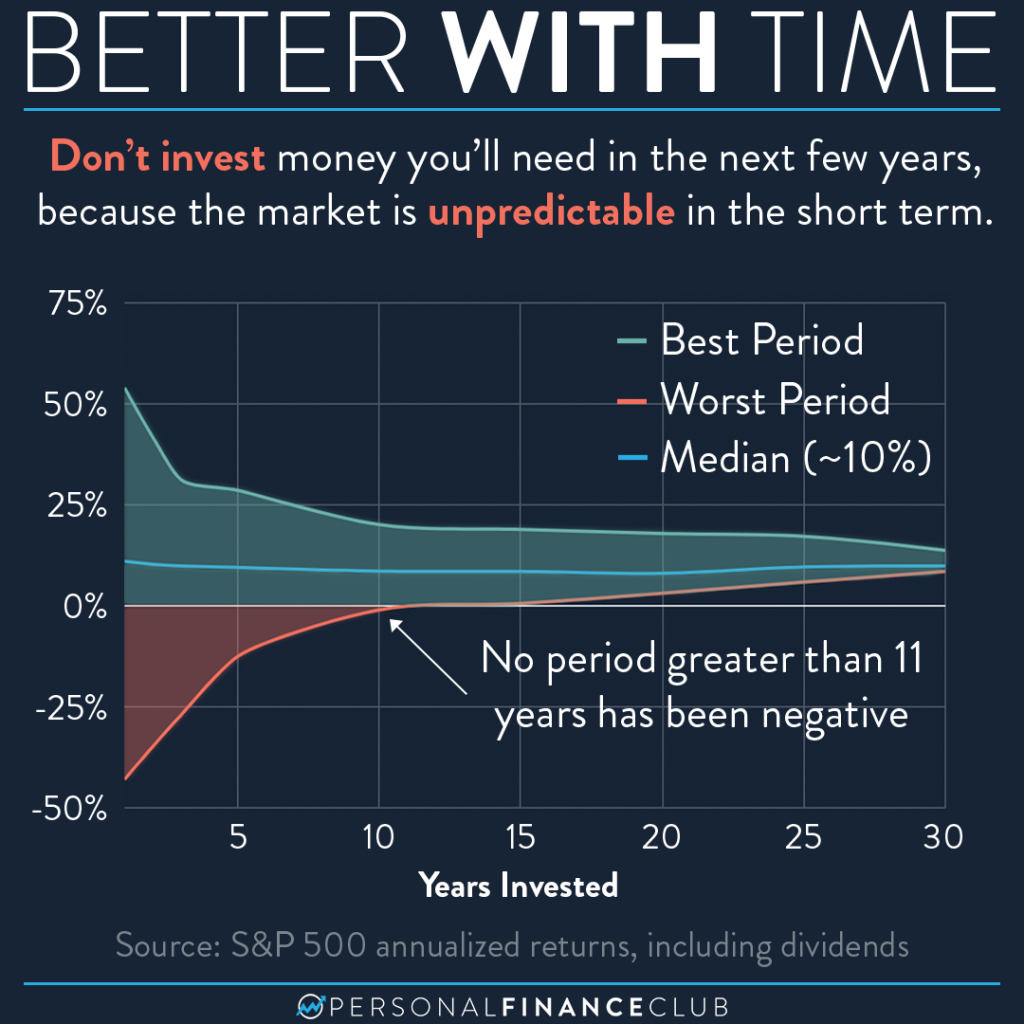Understanding the Stock Market
How to invest in stocks for beginners with little money – The stock market can seem daunting for beginners, but understanding its fundamental principles is the first step towards successful investing. This section breaks down the basics, explaining how the market works and the different types of stocks available.
Stock Market Fundamentals
The stock market is a marketplace where shares of publicly traded companies are bought and sold. These shares, or stocks, represent ownership in a company. When you buy stock, you become a part-owner, and you may receive a portion of the company’s profits through dividends. The price of a stock fluctuates based on supply and demand, influenced by factors like company performance, economic conditions, and investor sentiment.
How the Stock Market Works: A Step-by-Step Guide
The process of buying and selling stocks involves several steps. First, you need to open a brokerage account. Then, you research companies and choose stocks to buy. You place an order through your brokerage, specifying the number of shares and the price you’re willing to pay. Once your order is executed, you own shares of the company. You can sell your shares at any time, aiming to profit from price increases.
Types of Stocks and Associated Risks
Different types of stocks carry varying levels of risk and potential return. Common stocks offer ownership and voting rights, while preferred stocks prioritize dividend payments but usually have limited voting rights. Growth stocks are from companies expected to grow rapidly, while value stocks are from companies believed to be undervalued. Growth stocks are generally riskier but offer higher potential returns, whereas value stocks are considered less risky but with potentially lower returns.
Common Stock Investment Strategies
| Strategy | Description | Risk Level | Potential Return |
|---|---|---|---|
| Value Investing | Buying undervalued stocks | Medium | Medium |
| Growth Investing | Buying stocks in rapidly growing companies | High | High |
| Dividend Investing | Buying stocks that pay regular dividends | Low | Low to Medium |
| Index Fund Investing | Investing in a fund that tracks a specific market index | Low | Medium |
Starting Small: Micro-Investing and Fractional Shares
Micro-investing platforms have made stock market participation accessible to everyone, even those with limited capital. These platforms allow you to invest small amounts of money, often purchasing fractional shares.
Benefits of Micro-Investing Platforms
Micro-investing platforms offer several advantages for beginners. They lower the barrier to entry by allowing investments with small amounts of money. They often provide educational resources and tools to help beginners learn about investing. They simplify the investment process, making it easier to buy and sell stocks.
Buying Fractional Shares
Fractional shares allow you to buy a portion of a single share, making it possible to invest in expensive stocks even with a small budget. This expands investment options and allows diversification across multiple companies.
Comparison of Micro-Investing Apps
Several micro-investing apps are available, each with its own fees and features. Acorns, Stash, and Robinhood are popular choices. While specific fees and features vary, all three offer fractional share purchasing and user-friendly interfaces.
Steps to Open an Account and Make Your First Investment
- Download the app and create an account.
- Link a bank account or debit card.
- Choose an investment strategy or select individual stocks.
- Fund your account with your desired investment amount.
- Purchase your chosen stocks or funds.
Choosing Your First Stocks: Research and Due Diligence
Thorough research is crucial before investing in any company. Understanding a company’s financial health, business model, and competitive landscape helps you make informed decisions and mitigate risks.
Factors to Consider When Evaluating a Company
Before investing, assess a company’s financial statements (income statement, balance sheet, cash flow statement), analyze its revenue growth, profitability, debt levels, and competitive position within its industry. Examine management’s track record, assess the company’s future prospects, and understand any potential risks.
Resources for Conducting Stock Analysis
Numerous resources are available for fundamental and technical analysis, including financial news websites, company filings (like 10-Ks and 10-Qs), and financial analysis software. Learning to interpret these resources is key to successful stock selection.
Interpreting Financial Statements
Financial statements provide insights into a company’s financial performance. The income statement shows revenue, expenses, and profit; the balance sheet shows assets, liabilities, and equity; and the cash flow statement shows cash inflows and outflows. Understanding these statements allows for a comprehensive assessment of a company’s financial health.
Building a Diversified Portfolio
Diversification is a fundamental principle of investing, aiming to reduce risk by spreading investments across different asset classes. This minimizes the impact of poor performance in one area on the overall portfolio.
The Role of Diversification in Risk Management
By diversifying, you reduce your dependence on the success of any single investment. If one investment performs poorly, others may offset those losses, protecting your overall portfolio value. Diversification is crucial for managing risk and achieving long-term growth.
Asset Classes for a Diversified Portfolio
A diversified portfolio includes various asset classes, such as stocks, bonds, real estate, and commodities. The specific allocation depends on your risk tolerance and investment goals.
Sample Beginner Portfolio
| Asset Class | Allocation | Rationale |
|---|---|---|
| Index Funds (Stocks) | 60% | Provides broad market exposure and diversification. |
| Bonds | 30% | Offers stability and lower risk compared to stocks. |
| Cash | 10% | Provides liquidity for emergencies and opportunities. |
Rebalancing a Portfolio
Rebalancing involves adjusting your portfolio’s asset allocation to maintain your target percentages. This ensures you don’t become overly concentrated in any single asset class. Regular rebalancing helps manage risk and capitalize on market fluctuations.
Managing Your Investments: Monitoring and Adjustments
Regular monitoring of your investments is essential to track their performance and make necessary adjustments. This involves tracking your portfolio’s overall value and the performance of individual holdings.
Strategies for Managing Losses and Gains
Strategies for managing losses include setting stop-loss orders to limit potential losses on individual stocks. Managing gains involves deciding when to sell profitable investments to secure profits or reinvest those profits for further growth. Tax implications should also be considered when managing gains.
Situations Requiring Portfolio Adjustments

Portfolio adjustments might be necessary due to significant market changes, changes in your personal circumstances (e.g., job loss, major purchase), or a shift in your investment goals. Regular review and adjustments ensure your portfolio aligns with your risk tolerance and financial objectives.
Actions During Market Volatility
- Review your investment strategy and risk tolerance.
- Avoid making impulsive decisions based on short-term market fluctuations.
- Consider rebalancing your portfolio if necessary.
- Stay informed about market events but avoid excessive news consumption.
Understanding Investment Risks and Rewards

Investing involves both potential rewards and risks. Understanding these aspects is crucial for making informed decisions aligned with your risk tolerance.
Types of Investment Risks
Market risk refers to the overall risk of market downturns. Company-specific risk involves the risk of individual companies underperforming. Inflation risk is the risk that the purchasing power of your investments will erode due to inflation. Other risks include interest rate risk and currency risk.
Risk Tolerance and Investment Decisions
Risk tolerance refers to your comfort level with potential investment losses. Investors with high risk tolerance may invest in higher-risk assets seeking higher returns, while those with low risk tolerance prefer lower-risk investments.
High, Medium, and Low-Risk Investment Options
High-risk options include individual stocks of smaller companies or emerging markets. Medium-risk options include diversified stock funds or real estate investment trusts (REITs). Low-risk options include government bonds or high-yield savings accounts.
Return vs. Risk Comparison
| Investment Strategy | Potential Return | Risk Level |
|---|---|---|
| High-yield savings account | Low | Low |
| Government bonds | Low to Medium | Low |
| Index funds | Medium | Medium |
| Individual stocks | High | High |
Seeking Guidance: Resources for Beginners
While self-directed investing is possible, seeking guidance can be beneficial. Various resources are available to help beginners learn about investing and make informed decisions.
Benefits and Limitations of Financial Advisors, How to invest in stocks for beginners with little money
Financial advisors offer personalized guidance and support, but their services come with fees. They can help create a tailored investment plan but may not always be the most cost-effective option for beginners with small portfolios.
Reputable Online Resources for Learning
Numerous reputable online resources offer educational materials on investing. These resources cover various topics, from fundamental concepts to advanced strategies. Utilizing these resources enhances your investment knowledge and decision-making skills.
Importance of Continuing Education
The investment landscape is constantly evolving. Continuous learning is essential to stay updated on market trends, new investment strategies, and regulatory changes. This ensures your investment approach remains effective and adaptable.
Common Investment Mistakes and How to Avoid Them
Common mistakes include emotional investing (buying high and selling low), failing to diversify, and neglecting to rebalance the portfolio. Education and discipline are key to avoiding these mistakes.
Illustrating Investment Growth: How To Invest In Stocks For Beginners With Little Money
Let’s illustrate the power of consistent investing, even with small amounts, over time. Imagine investing $50 per month for 10 years in a diversified portfolio with an average annual return of 7% (a reasonable assumption for a diversified portfolio over the long term, but past performance is not indicative of future results).
Hypothetical Investment Growth Scenario
The initial investment of $50 per month would total $6,000 over 10 years. However, with the 7% annual return compounded yearly, the total value after 10 years would be significantly higher, around $8,000 (this is a simplified illustration and does not account for fees or taxes). This demonstrates how compound interest and consistent contributions can lead to substantial growth.
Factors Influencing Investment Growth
Investment growth is influenced by several factors: the initial investment amount, the rate of return, the investment timeframe, and the frequency of contributions. Higher rates of return and longer timeframes lead to greater growth. Compound interest, where returns generate further returns, is a significant driver of long-term growth.
Textual Representation of Investment Growth Chart
Year 1: $660; Year 2: $1375; Year 3: $2146; Year 4: $2978; Year 5: $3876; Year 6: $4847; Year 7: $5897; Year 8: $7033; Year 9: $8262; Year 10: $9589. (Note: These figures are illustrative and based on a simplified 7% annual return. Actual returns will vary).


